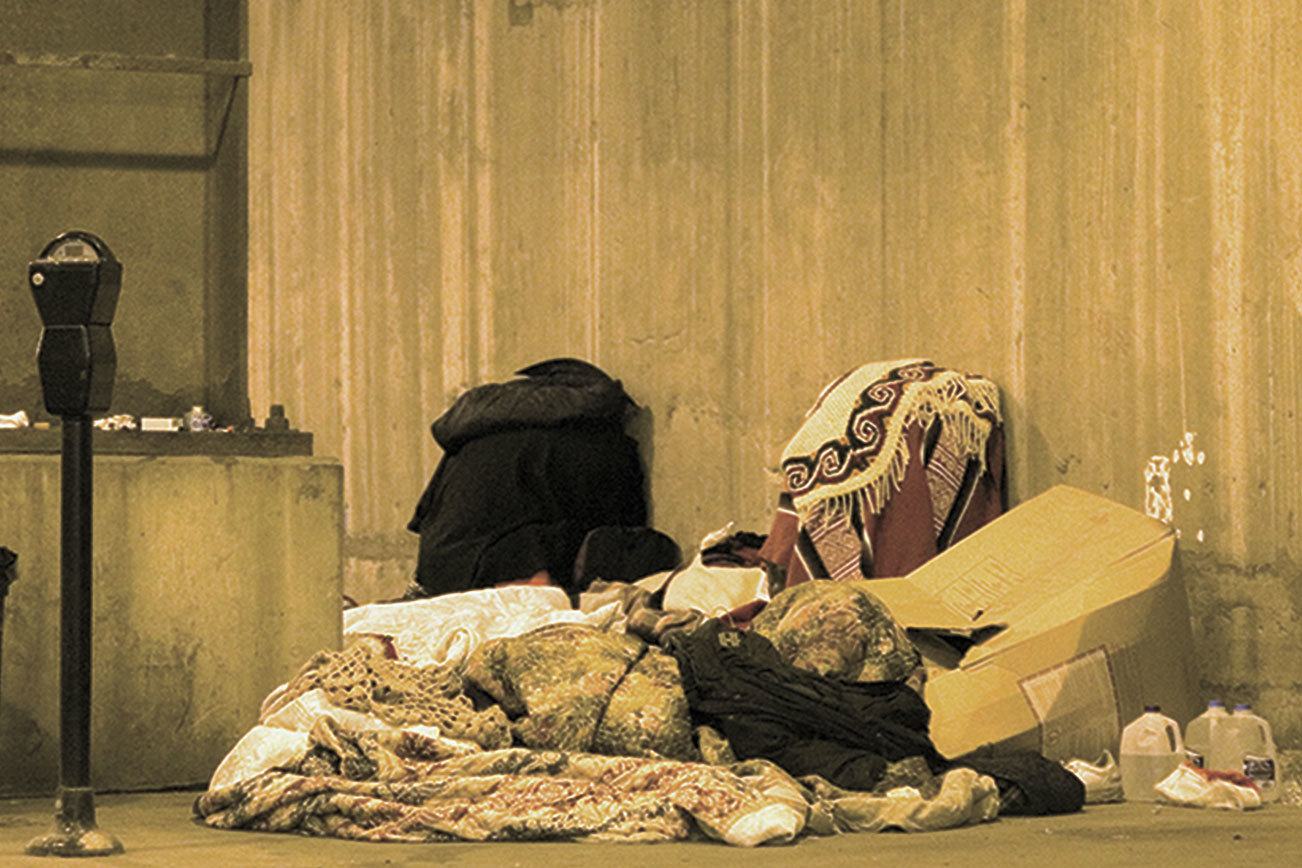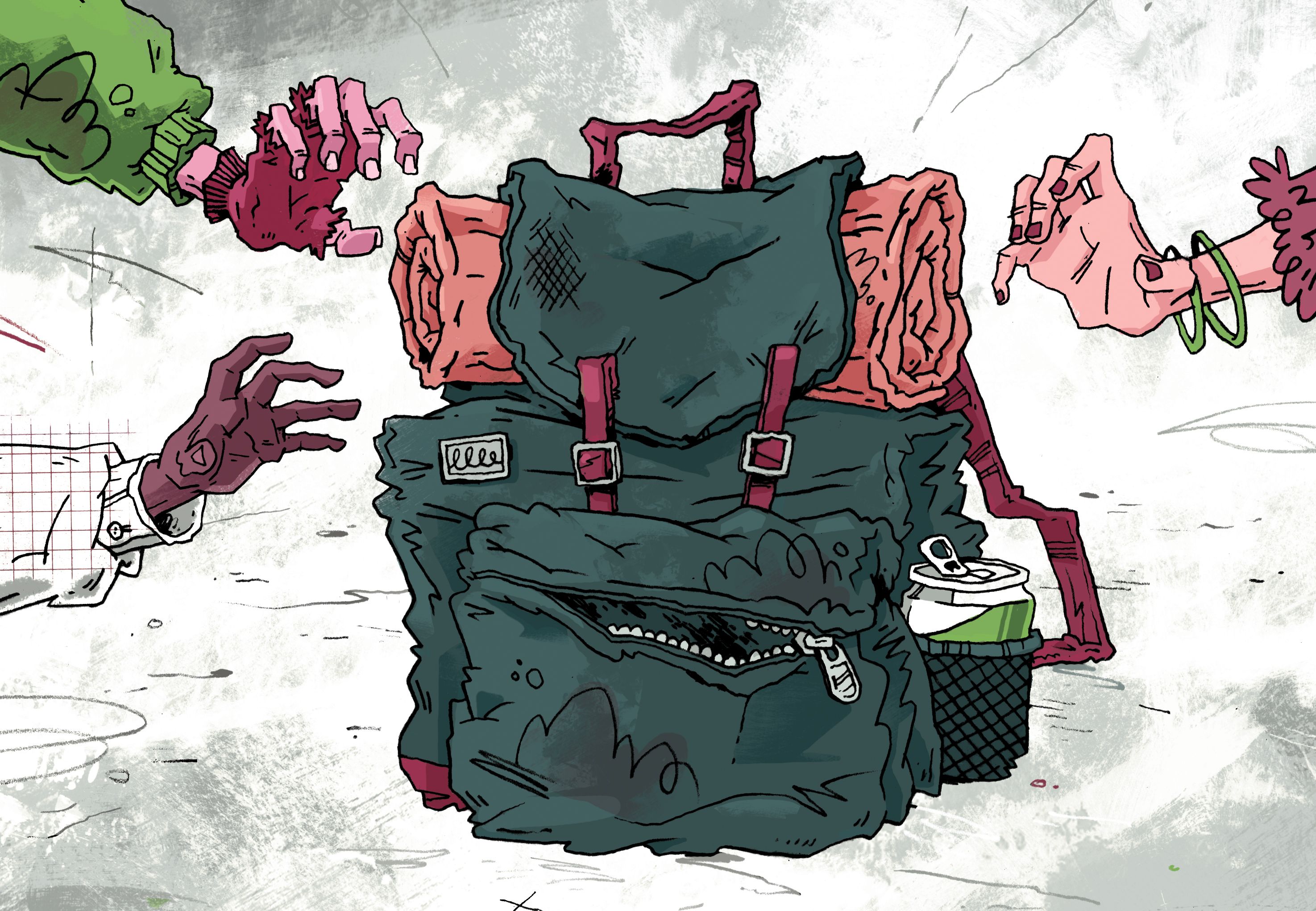Early Friday morning, volunteers and paid staff across King County will try to count the street homeless like me, as they have nearly every year since 1982. The results may show a substantial increase, not just because the last three counts have shown such increases, but also because of changes in the count itself; for the third time in as many decades, King County this year will use a significantly new approach to tallying the number of people sleeping outside. To understand what such an increase will and won’t signify, it helps to understand the differences between the past and new approaches, and the limits on all ways of counting the homeless.
Seattle’s past counts
Early in the “new homeless” era, two organizations, founded here to help them, started trying to count them, each autumn. The Seattle/King County Coalition on Homelessness counted the sheltered starting around 1980; Operation Nightwatch, a night ministry, counted the street homeless downtown from 1982. In 1994, Rick Reynolds became head of Nightwatch, whose count then involved a team of two homeless men and one of two civilian Seattle Police Department employees, each going out four nights running. But the homeless men were paid, and needed places to sleep by day, so starting in 1996, Reynolds instead got volunteers to count. This cut costs, cut the time to one night (“One Night Count”), and eventually enabled the count to expand outside downtown. Over the early 2000s, the street count, starting to reach the suburbs, outgrew Nightwatch’s office, and they gradually ceded its management to the Coalition, which would soon hire its first full-time staff member.
Soon after, state and federal rules produced significant changes. In 2005, state law required each county to make a 10-year homelessness plan. In King County, that resulted in the Committee to End Homelessness, and soon after it formed, it became responsible for all federal homelessness money from the U.S. Department of Housing and Urban Development. HUD required homeless counts (and related demographic info, usually from surveys), and they had to be done in January. So the count went from October 2004 to January 2006, skipping 2005. And the Committee funded it, with further geographic expansions, from 2007 to 2016.
The new approach
When the Committee’s 10-year deadline expired in 2015, Seattle Mayor Ed Murray declared an emergency and started hiring consultants. One of these, Barbara Poppe, backed King County’s longstanding objections to local contracts for homeless services without competitive bidding. So in 2016, the Committee, renamed All Home, called for proposals, and wound up with a new counting vendor with a new counting system, the whole package now titled, after an old survey, “Count Us In.”
All Home’s request for proposals included one significant change: They wanted the whole county covered by the street count. They got two proposals: one from the Coalition, and one from Applied Survey Research, a nonprofit that’s already counted most of the Bay Area for years. ASR brags that HUD considers its method a “best practice,” and it has two features Seattle hasn’t seen before: covering whole counties (as All Home had asked), and doing so with teams of two volunteers and a currently or recently homeless “guide,” paid for his or her time. All Home tried to split the difference: They asked ASR to do the shelter count and the survey work, but asked the Coalition to do the street count using ASR’s methods. The Coalition refused, without public explanation. So All Home and ASR (which has a one-year contract) are doing the whole thing. All Home will pay the guides in cash.
Reading the numbers
These two changes could both increase the numbers significantly and complicate comparing past and present data. This count is organizing its counting teams by census tract. Reynolds says previous counts have used essentially the same counting areas so that the numbers could be compared; census-tract organization is new, and breaks that chain. And since more areas are being covered, there might be a numerical increase just from that, which wouldn’t represent a true increase in local homelessness.
Similarly, while the guides may not make much difference, at best I imagine true synergy: volunteers providing logistical help and keeping guides on task; guides providing knowledge of homelessness and keeping volunteers’ courage up. Such teams could find a higher percentage of the street homeless, so again, an increased number may not mean a true increase.
So in 1996, 2006, and 2017, Seattle’s changed its approach, but there’s a reason: Counting homeless people is really hard. How would you count the homeless, if you had to? Just by scruffiness, or baggage? Count panhandlers? All unreliable. When I’m not at work, I’m usually in a library; would you go to every library, every employer, to find me? Even the Census Bureau has trouble counting us.
Street counts normally happen at night because many homeless people sleep then, and fewer housed people are around to confuse things. Still, counters are at huge disadvantages. Volunteers across the country often don’t try to count people in cars or tents accurately, don’t enter squats or shacks, don’t wake anyone up, may not even ask those awake “Are you homeless?”, and can hardly guess how many people are couch-surfing. As it happens, I’m strictly street homeless—the only nights I’ve spent indoors in the past four years were in a hospital—but on counting night in 2015 I was unexpectedly without bedding, and tried to get inside, which would have kept me out of the count. And many homeless people are much less consistent than I: “Most bounce around from place to place, spending a few nights in the shelters, a few nights on the streets, a few nights with family and friends,” writes James Wright in Beside the Golden Door: Policy, Politics, and the Homeless, his 1998 book summing up over a decade of his counting experience, late in a chapter titled “Why the Homeless Can’t Be Counted.”
Perhaps the best way to think about the counts is as a floor, a minimum. Shelter counts are pretty reliable, and street counts reliably underestimate. (This is why the feds want January counts—they want the highest sheltered percentage they can get.) So if the count says there are 10,000 homeless in King County, there aren’t just 9,800.
By e-mail, Wright compliments ASR’s method. “Reading their plan … makes me think they know what they are doing and will probably do a better job than gets done in 90 percent of the communities where [counts] take place.” So ASR will probably get closer than previous counts to the real number of homeless in King County. Last year’s street count was 4,505. Let’s suppose this year’s is 10,000. It’ll be an underestimate—closer than 4,505 was, but still, over 10,000 people. But say they find 4,500. That would actually be really good news. This year’s number will probably be bigger, maybe much bigger, but there’s a silver lining: It’ll probably be less of an underestimate of the real, even scarier, number.
news@seattleweekly.com







